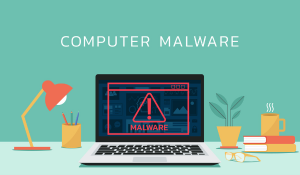The Core Principles of Endpoint Security and Why They Matter
In today's rapidly evolving digital landscape, endpoint security stands as the frontline defense against a myriad of cyber threats. As organizations...
.png)
Prioritizing the safety and stability of your systems is crucial. Given the increasing sophistication of cyber threats, patch management emerges as a potent defense strategy to safeguard your organization against potential vulnerabilities and security breaches. In 2017, WannaCry Ransomware spread to 100 countries over a weekend. Don't expect patching to stop the business model of digital blackmail. Be prepared!
| TABLE OF CONTENT |
There is no lack of knowledge among security departments when it comes to securing infrastructures. New technologies bring great advantages but also risks. Some experienced attackers may use zero-day attacks that exploit previously unknown vulnerabilities for which the software vendor has not yet released a patch. We will delve into the fundamentals of patch management, its significance in bolstering cybersecurity, and effective practices to streamline the patching process. Let's explore how a proactive approach to patch management can safeguard your business from emerging threats and optimize your IT operations.
Without proper knowledge or control of the software used in a company, defenders cannot properly protect their assets. When new vulnerabilities are announced, a race begins. The time between the announcement of a vulnerability, the availability of a vendor patch, and the actual installation on each computer is short.
Patch management is important as part of a holistic, multi-layered security approach. However, the more patches are released, the greater the effort, and the more resources cannot keep pace.
It is a process of identifying, testing, developing and installing software updates on the devices. It also closes security gaps in the operating system and thus possible entry gates. However, this can only prevent attacks that have previously exploited the closed vulnerability. This does not prevent the execution of malware or ransomware.
Here’s a breakdown of what patch management entails:
Vulnerability Remediation: The primary goal is to close security loopholes (vulnerabilities) in operating systems, applications, and firmware that cyber attackers could exploit.
System Stability and Performance: Patches often fix bugs, improve compatibility, and enhance the overall stability and performance of software and hardware.
Feature Enhancement: Some patches introduce new functionalities or improve existing ones, keeping systems current with the latest capabilities.
Compliance Adherence: Many industry regulations and standards (e.g., HIPAA, GDPR, PCI DSS) mandate timely patching as a fundamental requirement for data protection and security.
Reduced Downtime: By preventing successful cyberattacks and system failures caused by unpatched vulnerabilities, patch management helps minimize costly operational downtime.
Almost 90% of all security breaches are due to known vulnerabilities. Therefore patching often does not lead to the desired goal. For example, Microsoft alone publishes over 300 patches per year, only a fraction of which are needed at all. Together with third-party vendors such as Adobe, Oracle and others, the number of patches can grow to a considerable size that is no longer manageable.
Organizations across all sectors, particularly those managing sensitive patient data in healthcare or maintaining critical operational technology in manufacturing, face an unrelenting barrage of cyber threats. Each piece of software, from operating systems to specialized applications, can contain vulnerabilities—unintended flaws that malicious actors constantly seek to exploit. These weaknesses are not theoretical; they represent direct pathways for unauthorized access, data theft, and system disruption, often with severe consequences for continuity and trust.
This ever-present risk makes proactive patch management not just a technical task, but a strategic imperative. It's the disciplined process of identifying, testing, and deploying updates that correct these known security flaws. Neglecting this crucial activity is akin to leaving critical infrastructure gates wide open to intruders. For IT specialists charged with safeguarding vital systems, understanding the profound impact of diligent patching extends beyond simply applying updates; it's about building a robust, adaptive defense mechanism that shields against the latest exploits and ensures the integrity and availability of essential services.
Attackers are aware of this problem and can attack unprotected systems at any time, e.g. by phishing. Attacks can take advantage of new hardware that is installed on the network but not configured and patched with appropriate security updates. Even devices that are not visible from the Internet can be used by attackers who have already gained internal access and are hunting for internal pivot points or victims.
Unlike IT systems that IT teams replace or upgrade every three to five years, Industrial Control Systems (ICSs) often have a even longer shelf life in OT production environments. It’s not uncommon for an OT system to remain in production for 10 years or longer. This creates several challenges for security pros because: Legacy ICS patching is made more difficult by complexity and availability requirements.
In an environment optimized for uptime, patching systems can create operational disruptions, which means it doesn’t always receive highest priority. For organizations that must respond to a cyberattack, patching and remediating systems is not something that security pros can do in real time, which only further increases the operational disruptions.
Applying patches to ICS components presents a challenge to system administrators, because system updates and patches can interfere with the ICS function. A patch to an ICS component could change the way it works, resulting in component failure or loss of functionality.
Possibly even legal regulations prevent the implementation of security updates, because otherwise the systems would have to be recertified.
Understanding how patch management works is fundamental to maintaining a robust cybersecurity posture, especially for organizations in critical sectors like healthcare and manufacturing. This systematic process ensures that all your systems are protected against known vulnerabilities, minimizing the risk of a breach. Effective patch management isn't just about installing updates; it's a comprehensive lifecycle designed to identify, test, deploy, and verify software patches across an entire IT infrastructure.
Here’s a breakdown of the typical steps involved in a comprehensive patch management process:
Inventory and Asset Discovery: The initial step involves creating a complete and accurate inventory of all hardware and software assets within the organization's network. This includes operating systems, applications, network devices, and any other endpoints that require patching. You can't patch what you don't know you have.
Vulnerability Assessment and Patch Identification: Once assets are inventoried, the next step is to identify known vulnerabilities and available patches. This involves regularly monitoring vendor releases, security advisories, and threat intelligence feeds. Automated tools often scan systems to detect missing or outdated patches.
Patch Acquisition: After identifying necessary patches, they must be securely acquired from legitimate and trusted sources (e.g., directly from the software vendor). It's crucial to verify the integrity and authenticity of the patches to prevent the introduction of malicious code.
Patch Testing: Before widespread deployment, patches should be thoroughly tested in a controlled, non-production environment that mirrors the live environment. This step is critical to identify any potential compatibility issues, conflicts, or adverse effects that the patch might have on existing systems or applications.
Patch Deployment/Rollout: Once testing is complete and the patch is deemed stable, it is deployed across the relevant systems in the production environment. This can be done manually for smaller environments, but larger organizations typically use automated patch management tools to streamline and schedule deployments. Deployment strategies often involve rolling out patches in phases to minimize disruption.
Verification and Reporting: After deployment, it's essential to verify that the patches have been successfully installed and are functioning as intended. This includes checking system logs, running vulnerability scans, and confirming the patch version. Regular reporting on the status of patch deployments and overall patch compliance is also crucial for auditing and demonstrating due diligence.
Monitoring and Maintenance: Patch management is an ongoing process, not a one-time event. Continuous monitoring of systems for new vulnerabilities, patch failures, and the availability of new updates is vital. Regular review and optimization of the patch management process itself ensures its continued effectiveness.
Patch Management and Vulnerability-Management are both essential components of a robust security strategy, but they are often confused or used interchangeably. Although they are closely related, they address different aspects of cyber security and require separate but coordinated processes.
| Feature | Patch Management | Vulnerability Management |
| Focus | Remediation of known vulnerabilities through software updates | Identification, assessment, and treatment of vulnerabilities |
| Activity | Reactive; applying vendor-provided patches | Proactive; searching for and analyzing potential vulnerabilities |
| Timing | After a patch is known and available | Continuous and regular |
| Scope | Specific software products and operating systems | Comprehensive; includes systems, applications, and configurations |
| Goal | Reducing the attack surface by closing known gaps | Minimizing risk by detecting and prioritizing vulnerabilities |
| Tools | Software update tools, deployment systems | Vulnerability scanners, penetration testing tools, SIEM systems |
| Output | Installed patches, patch deployment logs | Reports on identified vulnerabilities, risk assessments |
| Responsibility | Often IT operations teams | Often security teams, sometimes in collaboration with IT operations |
While patch management is a critical element of any cybersecurity strategy, relying solely on it leaves significant security gaps. Focusing exclusively on applying vendor-released updates addresses known vulnerabilities, but it doesn't account for the broader spectrum of risks that organizations face. To truly fortify their defenses, companies must recognize the limitations of a singular focus on patch management and embrace a more holistic approach to security.
Old OS versions are no longer provided with updates which makes patch management ineffective.
Cannot prevent malware or ransomware from being executed.
Attacks via USB/removable media cannot be prevented.
BadUSB attacks cannot be prevented either.
On a fully patched system, an encryption trojan can still be used.
Offline systems can not be patched at all or only with great administrative effort.
Patch management requires a high administrative effort: probe, test, distribute, validate patches.
In the production environment, the time window is limited to distribute patches promptly.
Most patch installations require reboots and affect the production of end users and machines.
Regulations prevent the implementation of security updates.
Many serious vulnerabilities are not caused by coding but configuration problems.
For organizations operating in critical sectors such as healthcare, manufacturing, and other essential enterprises, the effectiveness of patch management directly correlates with their ability to maintain operational continuity and secure vital assets. Implementing a strategic approach to patching is not merely about applying updates; it's about embedding resilience into the core of your cybersecurity posture. Adhering to proven best practices is therefore crucial for mitigating risks and safeguarding against the ever-evolving threat landscape.
Here are key best practices for robust patch management:
Comprehensive Asset Inventory & Discovery: Maintain a precise and up-to-date inventory of all hardware, software, operating systems, and network devices within your infrastructure. You cannot effectively patch what you don't know you have.
Risk-Based Prioritization: Classify and prioritize patches based on the severity of the vulnerability, the potential impact on business operations, and the criticality of the affected systems. Focus resources on high-risk, high-impact vulnerabilities first.
Rigorous Testing & Staging Environments: Before widespread deployment, thoroughly test all patches in a controlled, non-production environment that mirrors your live systems. This prevents unforeseen compatibility issues or system instability in critical operational environments.
Strategic Automation & Orchestration: Leverage automated patch management tools to streamline the deployment process, reduce manual errors, and ensure consistent application of updates across large or distributed environments, while maintaining oversight.
Robust Rollback Capabilities & Disaster Recovery Planning: Implement mechanisms to revert systems to a pre-patch state if issues arise, and integrate patch management into your broader disaster recovery and business continuity plans. This provides a critical safety net.
Continuous Monitoring, Auditing, & Documentation: Establish ongoing monitoring to confirm patch success and identify any failures or new vulnerabilities. Regularly audit your patch compliance and maintain detailed documentation of the entire process for reporting, analysis, and regulatory adherence.
Enforcing secure system configuration and preventing zero-day attacks are even more important because of the above issues. DriveLock offers a defense-in-depth strategy with holistic multilayer protection. The goal is to protect data against attackers from the outside and the inside whilst protecting vulnerabilities from being exploited.
Application Control securely protects against all known and unknown threats such as Zero-Day-Exploits, WannaCry, Ransomware or Bad USB in a future-proof manner. With Application Control you decide, which applications are allowed. There is no impact on the performance of the system: even during full Whitelist-mode, the effort of implementation is far less than with comparable solutions.
DriveLock Device Control controls all removable media and devices. Systems with a defined and certified state, which may not simply be changed or patched, can be initially sealed and permanently protected with DriveLock Application Control.

In today's rapidly evolving digital landscape, endpoint security stands as the frontline defense against a myriad of cyber threats. As organizations...

A security breach is more than a technical headache; it represents a direct threat to patient safety and production continuity. When a hospital...

USB ports are ubiquitous – found on laptops, desktop computers, and even on devices in manufacturing environments or healthcare settings. They enable...